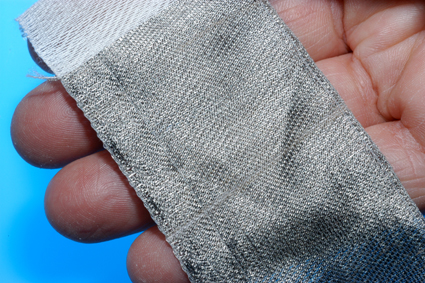Innovative Technology and new Swiss Standards for Hospital Operating Rooms
Germ fighting innovations also reduce hospital costs
Two recent international studies by the WHO and OECD have ranked the Swiss health system as «good», but at the same time as also being «too expensive». Switzerland spends 11.5 percent of its Gross National Product for health and is in second place worldwide behind the USA which spends 15 percent. The enormous pressure to reduce health costs affects hospitals as well. On the one hand they must do their share to reduce costs while at the same time the quality of medical care must not be compromised. This past September, representatives of hospitals, government officials, health managers and planners, medical facilities architects and other involved persons in the health field came together at the Empa-Academy and held a conference on the topic of costs reduction with the help of new technical innovations and how new Swiss hospital operating rooms standards can ensure that the quality of care shall remain high.

|
Tissue with silver coated synthetic fibers While we received with joy the good news that health insurance premiums shall rise only very moderately in the coming year, we also were told the bad news, namely that health costs this year have risen greatly again, in comparison with last year's modest rise. How these ever rising costs can be cut down will certainly stir up the discussions. Hospitals, under an enormous pressure to reduce expenditures, were in the focus of interest at the conference titled «New Swiss Standards for Hospital Operating Rooms / Technical Innovations for Hospitals». Concerned parties met and discussed possibilities of savings through the use of innovative technologies and at the same time maintaining national minimum standards for medical care. |
||
|
New Swiss Standards for Hospital Operating Rooms
|
||
|
Silver and nanocoatings in the fight against hospital germs
|
||
|
A further problem are hospital germs which can cause infections in patients with a weakened immune system and against which antibiotics are ineffective because the germs have become resistant to the drugs. Empa researcher Enrico Körner presented a new method through which hospital effects can be coated with antimicrobial protection, for example surgical textiles coated with a nanometer thick silver coating which considerably reduces microbial colonization. In addition, the Plasma technique used for this allows for example to improve the biocompatibility of catheters by preventing reactions of rejection. Entire medical machines can thus be coated with antimicrobial layers, according to Ulrich Sander from the Leica Microsystems (Schweiz) AG. Since microscopes in operating rooms cannot be sterilized, they were until now covered with sterile synthetic materials. Here too, an innovative nanothick silver coating hinders the spread of hospital germs. Clemens Arpagaus from the firm of Atheco AG presented another novelty: Paint which is not toxic, so called «Bioni», with which mold and algae on walls and building fronts can be prevented and which is effective against hospital germs resistant to antibiotics. A substance with nanoparticles helps to reduce the use of conventional biocide, fungicide and conserving substances.
Further information:
|
||
|
|||

